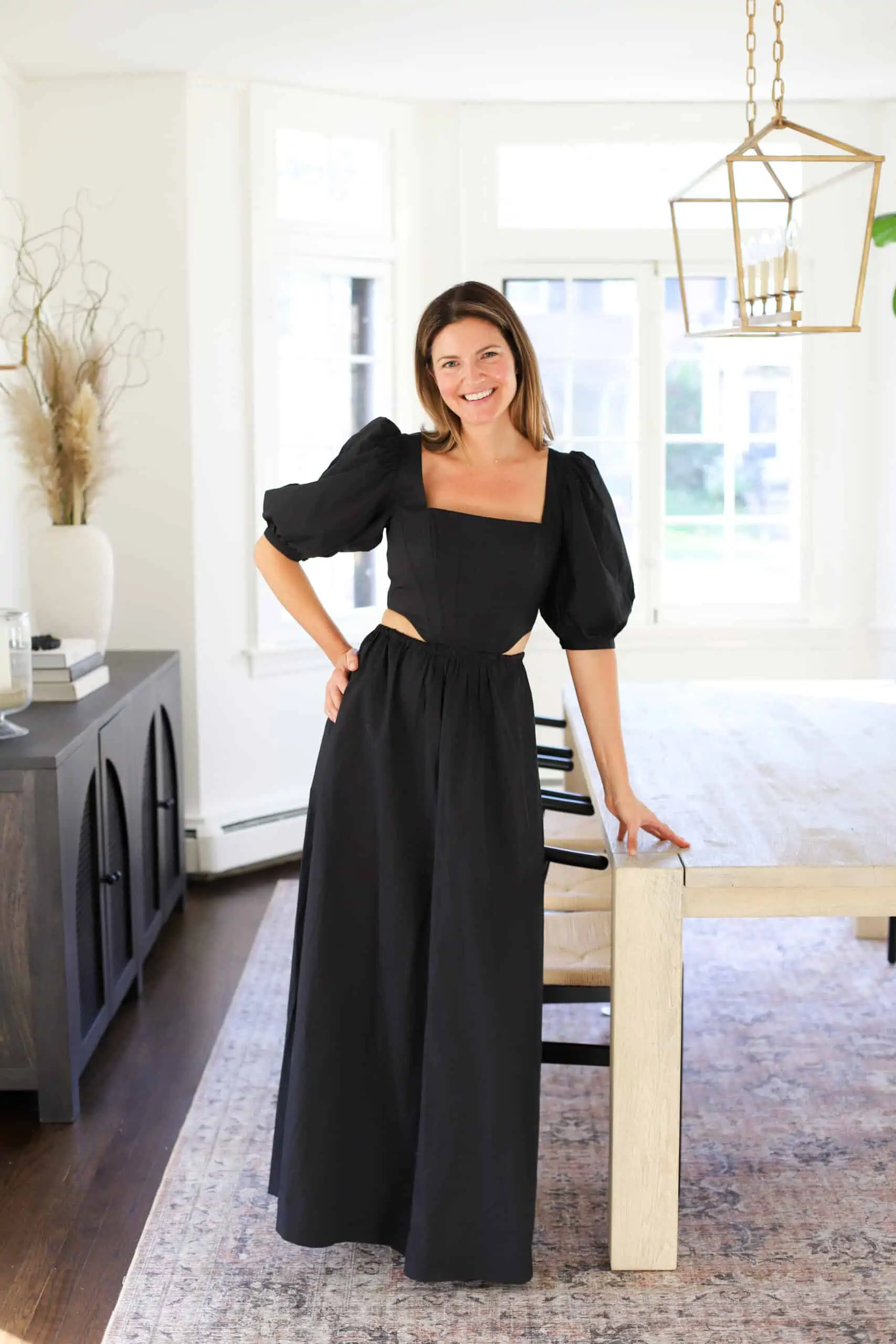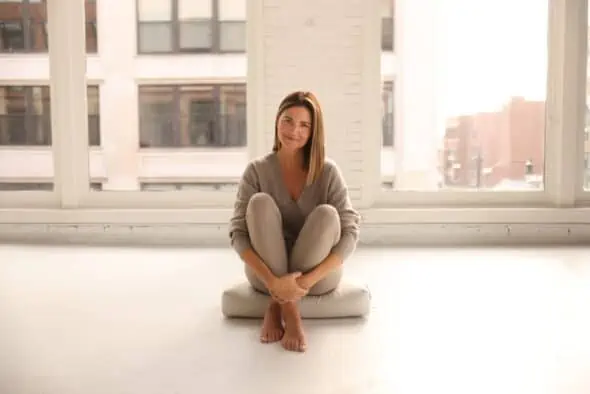
How to begin a meditation practice
Beginning a meditation practice can feel intimidating if you’ve never done it before. How to sit, how long, what am I supposed to be thinking about it. Wait…am I supposed to be thinking? How come my mind won’t stop? AGHHHHH….
It can almost feel like we’re doing it all “wrong” before we’ve even begun, causing even MORE stress. Exactly the opposite of what we’re looking for.
But the truth of the matter is, there is no “doing it wrong” when it comes to meditation. In fact, there’s no such thing as a “perfect” meditation practice or doing it “right”.
It’s called a PRACTICE for a reason, it’s just a practice. An exercise. There is no right or wrong. So let’s get rid of the self-critique or judgment before we even begin.
How to begin a meditation practice
Why meditate?
If you’re thinking about starting a meditation practice, chances are you’re hoping to slow down your mind. Gain some clarity. Some grounding. And maybe find a little space to just breathe. But there are even more benefits. Recent studies have linked meditation to…
- a reduction of heart disease and stroke
- a decrease in inflammatory disorders
- a decrease in depression,
- helping to regulate anxiety and mood disorder
- increasing the concentration of grey matter in the brain
- helps to regulate sleep
- helps to slow down the aging process
What’s the goal? So often people assume the goal of meditation is to clear your mind of thoughts. But friends, that’s never going to happen. Our brain can think up to 50 thoughts per minute. That’s roughly 50 70 thousand thoughts a day. Our brains are hardwired to THINK. So rather than trying to STOP ourselves from thinking. The goal of meditation, or at least the way I look at it, is to create SPACE between our thoughts. The goal isn’t to be “thought-free”, but rather to notice our thoughts, recognize we’re having one, and then mindfully chose not to react, and return our breath. Always returning. Important things to keep in mind
1. Consistency is key.
When you think about meditation practice or any mindfulness practice for that matter, consistency is key. Showing up, daily. It doesn’t work if you do it every once in a while or when it feels convenient. You really have to put in the effort, every day, in order to feel the benefits.
The length of time isn’t as important as the repetition and consistency. So choose an amount of time that works for you. Maybe in the beginning it’s 3 minutes. Great. 3 minutes daily is better than 10 minutes every once a week. Pick a length of time that challenges you, but is also realistic.
2. “Space has energy, time has memory”.
This is one of my favorite quotes by Jay Shetty (who if you aren’t already familiar with, his latest book, “Think Like a Monk” and podcast are both excellent) and it’s so true.
“Space has energy”, so mindfully chose where you’re going to sit. Choose a spot you love. A spot you can return to. It doesn’t have to be big or beautiful, but it should be a place that you can relax in. Take some time to decide where in your home can be dedicated to your practice. Maybe it’s just simply next to your bed, or below your favorite window that gets great morning sun. But choose a place where you can be happy and relaxed, and a place you can return to.
Equally as important is the time you meditate. It does NOT have to be at 5am. It can be whenever time works for you. And it should be a time of day that you can feel relaxed, turn off your phone, and truly tune it. I personally like to meditate early in the morning because it’s the only time of the day that’s actually in my control. But find when and where works for you, and then try to stick with that routine with some consistency.
3. All you need is you.
There are so many different ways to meditate out there, and books or apps that will guide you through certain medications. And those are all well and good. Some people believe you should have a mantra, while others think you should keep your eyes open. Truth be told, I don’t think any of it matters. What matters is that you find something that works for YOU, and stick with it. If you’re just starting out – for now – don’t worry about anything other than YOU and YOUR BREATHE. It’s really as simple as that.
Now, let’s get started
Once you’ve determined when and where you’re going to meditate, you’re ready to go. So let’s get started.
Finding your seat
- Sit cross-legged on a comfortable seat or cushion (I like using a bolster like this). Sitting on something helps bring your knees lower than your hips (which helps a lot, especially with knee health if you’re doing this every day).
- Feel both of you sits bones evenly on the ground/bolster. Take a moment to really get yourself grounded,
- Then sit up nice and tall. To make sure your spine is stacked directly over your hips (and you’re not leaning forward) lean back just a little until you feel your abdominal muscles “catch” and engage.
- Tuck your chin slightly so that your cervical spine is straight.
- Place your hands softly on your knees or in your lap. There are a few different hand variations you can add, but not necessary. You can place your palms on your knees facing up and open, which is believed to help bring in more energy. Or palms facing down on your knees which is believed to help you feel more grounded. Either way works.
- Relax your jaw, your shoulders. Release your tongue from the roof of your mouth. Notice any tension in your body and softly try and release it.
- Set your timer to whatever time you’ve already determined, close your eyes, soften your gaze, and begin.
Focus on your breath
- Begin by focusing on your breath, breathing in and out through your nose (if you can), feeling smooth expansive inhales, and full deep exhales. As you breathe, not only feel not only your front body but also your back body expanding equally. Visualizing yourself expanding in all directions.
- As thoughts begin to come into your mind (which they will, rapidly, and that’s ok). Pause. Notice them. Acknowledge the thought, and then watch it leave.
- I like to visualize my thoughts as clouds coming and going. No judgment. No attachment. They hold no real meaning. It’s just a thought, passing by. See it coming and then just as quickly, see it leaving.
- Return to your breath. The important part is not the thoughts, but returning to the breath. Make that your focus. The practice of returning.
- Continue until your time is up. Slowly and softly begin to flutter open your eyes. Take a moment to just breathe and notice any differences. Bring your palms together to touch at your heart, bowing your head towards your heart.
- Return the next day
- I like to keep my mat where I meditate. It helps keep me consistent and more accountable.
Create a space that makes you feel good and that you’ll enjoy returning, daily.
I keep things around my space that make me feel calm and peaceful. Things I love.
Before I begin I like to take a moment to place my hands on my belly to make sure my abs are engaged and holding me nice and tall, and then just feel my belly rise and fall as I begin to slow my breath.
You do NOT need to incorporate any mudras, but an easy one, and probably the most basic and common is called the “Chin Mudra” which translates to conscious seal. Gently join your thumb and index finger together, creating a seal, and keep your other three fingers gently upright.
Finish your practice by bringing your hand together by your heart, bowing your head towards your heart, and feeling a moment of gratitude before you move on with your day.
For other inspiration on my creating healthy routines and mindsets, you can check out my blog post on my morning routine and 5 ways to help shift your mood.





LEAVE A COMMENT & RATE
Happy Holidays,
I hope that your week is going well!
I noticed you share some helpful resources related to mindfulness and meditation on your website, so I wanted to offer you another one specific to seniors if you’re interested.
While meditation has many well-known benefits, many people do not realize that it can help boost the immune system, reduce blood pressure, relieve pain, and more – all of which are things that apply to older adults. To bring more attention to how meditation can improve the lives of seniors, we’ve created a guide highlighting:
– The benefits of meditating for seniors
– Meditation techniques
– How to get started with meditation
Please take a look:
https://www.retireguide.com/retirement-life-leisure/healthy-aging/mental-wellness/meditation/
If you think this would be helpful, would you consider adding our guide to your page: https://katyrexing.com/2021/01/11/how-to-begin-a-meditation-practice/?
Thank you so much for your time and consideration. Have a great day!
Greetings,
—
Daniel Mc Barnette | Outreach Coordinator
1 S. Orange Ave. Ste. 500A | Orlando, FL 32801
[email protected]